"Auguste Rodin: In Association with the Musée Rodin, Paris" @ Coskun, London
Auguste Rodin (1840-1917), Bacchanale. photo courtesy Coskun
16 x 19 x 16 in (48 x 41 x 41 cm). Edition: 5/8. Materials: Bronze. Markings: Inscribed A. Rodin, © by Musée Rodin, numbered, dated and stamped with foundry mark - Contact Gallery for Price
Other casts: Shizuoka, Prefectural Museum of Art; Séoul, Rodin Gallery; São Paulo, State Picture Gallery
Notes: This group, which is difficult to date accurately, is a perfect example of the assemblages produced by Rodin starting in the second half of the 1880s. The composition consists of a female centaur, whose torso is taken directly from that of his Méditation, and a bacchante, reconstituted from the Torse d’Adèle. These two figures were originally placed at the two ends of the tympanum of La Porte de l’Enfer, and are formally linked by way of a diagonal axis, the curve of the statue of Méditation echoing the arched Torse d’Adèle.
The fantastic centaurs - half-human, half-horse - were an essential element of Dionysian processions; for the Greeks they symbolized bestial appetites. They inspired Rodin early on in his career, and he frequently used them in female form in both sculptures and drawings, playing on the contrast between the human and the animal, the rational and the irrational. This Bacchanale perfectly synthesizes Rodin’s formal study of the female body. He was fascinated by the portrayal of Lesbian couples by artists such as Degas and Rops, and the press referred to him as the "Great Faun."
Auguste Rodin (1840-1917), Bourgeois de Calais: Jean de Fiennes, Tête, photo courtesy Coskun
30.6 x 30.5 x 29.7 cm (12 x 12 x 12 in) - Edition: II/IV. Materials: Bronze - Markings: Inscribed A. Rodin, © by Musée Rodin, numbered, dated and stamped with foundry mark - Contact Gallery for Price
Other casts: Adelaide, Art Gallery of South Australia
Notes: This head belongs to one of the six Burghers of Calais who chose to sacrifice themselves to save their town. Rodin immortalized their heroism in one of his famous works. A true masterpiece in its universal character and quintessential depiction of human suffering, the monument to the Bourgeois de Calais positions man and his inner world at the center of Rodin’s concerns. The attitudes and latent gestures of each of the figures reflect the working of the faces, making the group a model of expressiveness. Rodin portrayed them as defeated men, in all their humanity and pain.
The inner drama experienced by the burghers of Calais is especially apparent here, rendered through the play of light on the face of Jean de Fiennes. The half-open mouth and deeply sunken eyes skillfully capture a dense shadow, a technique to be repeated some ten years later in the symbolic portrait of Balzac.
Auguste Rodin (1840-1917), Etude pour Polyphème, photo courtesy Coskun
44 x 18 x 15 cm (17 x 7 x 6 in) - Edition: 6/8 - Materials: Bronze - Markings: Inscribed A. Rodin, © by Musée Rodin, numbered, dated and stamped with foundry mark - Contact Gallery for Price
Other casts: Stanford University, Cantor Arts Center; San Diego, Museum of Art
Notes: Polyphème was originally one of the countless anonymous figures sculpted to populate La Porte de l’Enfer in the 1880s, where it appeared in the middle of the right-hand leaf. It might have been the example of the Medici Fountain in the Luxembourg Gardens that gave Rodin the idea of combining this little soul with the two slightly modified figures of L’Eternelle Idole to create a new work, Polyphème, Acis et Galatée.
The group illustrates an episode from Ovid's Metamorphoses, the story of the criminal passion of the insanely jealous Cyclops Polyphemus who, braced on one leg, crushes the nymph Galatea and her lover, the young shepherd Acis, under a rock. The figure on its own, enlarged to twice its size by Lebossé, Rodin’s loyal praticien, was to be reused in many assemblages. The original posture of the torso, its legs completely amputated in this Étude pour Polyphème, is still discernible, and although the limbs have disappeared Rodin's synthetic approach has retained the movement. Though described as a study, this work was probably in fact produced after the figure was exhibited to the public, thus emphasizing the importance Rodin gave to all phases of his thinking. “The Beautiful is like a god, a part of Beauty is the whole of Beauty,” he wrote in 1914.
Auguste Rodin (1840-1917), Eustache de Saint-Pierre, tête, dernier état, photo courtesy Coskun
41.5 x 25 x 29.9 cm (16 x 10 x 12 in) - Edition: III/IV - Materials: Bronze - Markings: Inscribed A. Rodin, © by Musée Rodin, numbered, dated and stamped with foundry mark - Contact Gallery for Price
Other casts: Calais, Musée des Beaux-Arts; Brooklyn, Museum of Art; Seoul, Rodin Gallery; Los Angeles, Iris and B. Gerald Cantor Foundation
Notes: In 1347, at the end of a year-long siege, the burghers of Calais handed the keys of the town to the victorious King of England. According to Froissart's chronicles, Eustache de Saint-Pierre was the first to agree to sacrifice his life to the king. The commissioners of the monument to the burghers of Calais had envisaged him as the only one of them to be so honored; he was also the eldest.
After making numerous studies, as was his habit, Rodin portrayed a resigned, worn, gaunt figure. For the face, he turned to his friend, the painter Jean-Charles Cazin. The hair clearly reveals one of Rodin’s favorite working methods, adding little lumps of clay. The rope around the neck frames the noble face like a ruff. Through the tense features Rodin perfectly conveys his contained anguish as Saint-Pierre leads the procession of burghers to their death.
Auguste Rodin (1840-1917), Femme accroupie et Martyre, photo courtesy Coskun
65 x 40 x 35.5 cm (26 x 16 x 14 in) - Edition: 2/8 - Materials: Bronze - Markings: Inscribed A. Rodin, © by Musée Rodin, numbered, dated and stamped with foundry mark 6 Contact Gallery for Price
Other casts: São Paulo, State Picture Gallery
Notes: This assemblage is composed of two of Rodin's most famous figures: La Martyre, standing upright in this version, and the Femme accroupie with its primitive sensuality. Both figures were originally modelled for La Porte de l’Enfer, where they each appear twice: once they appear together on the tympanum to the right of Le Penseur. Both were favorite figures of Rodin, reused many times.
La Femme accroupie was strongly influenced by Michelangelo; it was displayed on several occasions at the Georges Petit gallery and reappears in several assemblages, including the famous Je suis Belle, which is also in La Porte de l’Enfer. Its spiral composition highlights the contours of the back of his model, Adèle Abbruzzesi. With a slight variation in the position of the leg, it is assembled to La Martyre, a contrasting, angular figure in a state of extreme tension. Curved lines and broken lines echo each other in this exceptionally dynamic assemblage balanced in an extremely precarious position, whose boldness is matched only by its modernist style.
Auguste Rodin (1840-1917), Fils d’Ugolin, Torse, grand modèle, photo courtesy Coskun
66 x 30.1 x 24 cm (26 x 12 x 9 in) - Edition: 3/8 - Materials: Bronze - Markings: Inscribed A. Rodin, © by Musée Rodin, numbered, dated and stamped with foundry mark 6 Contact Gallery for Price
Other casts: São Paulo, State Picture Gallery
Notes: In La Porte de l’Enfer Rodin depicted the story of the torment of Count Ugolino and his sons, as told in Dante’s Divine Comedy. Imprisoned with his children in the Tower of Hunger in Pisa, he watched them die before starving to death himself. Rodin, who owned a bronze by Jean-Baptiste Carpeaux on the same subject, began to think about the story of Ugolino as early as 1876, and decided not to illustrate the first days of Ugolino’s torture, as his predecessors had done, but the last days, portraying him crawling over his dead or dying children.
The disassembled elements of Ugolin took on a life of their own during a period we are inclined to place around 1886. This torso, used for Paolo, also served as the starting point for the male figure of Fugit Amor and as the handle on the side of a ceramic vase, before undergoing other variations and interpretations. Enlarged by Lebossé, the Torse du fils d’Ugolin, with its legs and arms boldly truncated, rises like a totem, an abstraction, witness to the long formal path down which Rodin travelled: "a part of beauty is the whole of beauty."
Auguste Rodin (1840-1917), Giganti, photo courtesy Coskun
61.2 x 18.2 x 16.2 cm (24 x 7 x 6 in) - Materials: Bronze - Markings: Inscribed A. Rodin, © by Musée Rodin, numbered, dated and stamped with foundry mark 6 Contact Gallery for Price
Notes: If the model has been correctly identified, this work provides extremely interesting evidence of the close relationship between Camille Claudel and Rodin around 1885. Both of them, along with Jessie Lipscomb, an English sculptor who was a friend of Camille, used the same Neapolitan model, nicknamed Giganti, whose name and address Rodin recorded in one of his notebooks. Rodin was the only one of the three to sculpt the whole figure, before breaking it up and separating the torso and the head.
This figure survives without the arms and part of the left leg. A theory has been proposed that this was a study for Saint-Jean-Baptiste, but this is unlikely given that the movement in Giganti is purely latent, bringing it closer to the numerous nude studies that Rodin was in the habit of constantly reworking, especially for La Porte de l’Enfer. Reflecting the interest shown by Rodin in the architecture of the human body, its violent fragmentation in no way undermines its tranquil balance, a quality that Rodin also admired in Greek sculpture.
Auguste Rodin (1840-1917), Giganti, Tête, photo courtesy Coskun
9 x 8 x 8.3 cm (4 x 3 x 3 in) - Edition: II/IV - Materials: Bronze - Markings: Inscribed A. Rodin, © by Musée Rodin, numbered, dated and stamped with foundry mark 6 Contact Gallery for Price
Notes: If the model has been correctly identified, this work provides extremely interesting evidence of the close relationship between Camille Claudel and Rodin around 1885. Both of them, along with Jessie Lipscomb, an English sculptor who was a friend of Camille, used the same Neapolitan model, nicknamed Giganti, whose name and address Rodin recorded in one of his notebooks. Rodin was the only one of the three to sculpt the whole figure, before breaking it up and separating the torso and the head.
The intensely dramatic expression and deeply sunken eyes are comparable to the faces on the frieze on the tympanum of La Porte de l’Enfer. The planes of the face are clearly defined, without any alterations or superfluous details, the hair sketchily indicated, the half-open mouth in a faint grimace. This is an image of suffering that has something universal in it. It illustrates the extent of Rodin's study of the expression of feelings.
Auguste Rodin (1840-1917), Homme Qui Marche Sur Colonne, photo courtesy Coskun
354 x 60 x 39 cm (139 x 24 x 15 in) - Edition: 5/8 - Materials: Bronze - Markings: Inscribed A. Rodin, © by Musée Rodin, numbered, dated and stamped with foundry mark - Contact Gallery for Price
Notes: This work is the result of an assemblage of two studies for Saint-Jean-Baptiste, probably made towards the end of the 1870s: a study of a torso and a pair of legs. Rodin did not hesitate to retain the fissures and cracks of the torso, as well as the very disparate modeling of the two elements, which do not hamper the completion of the work but rather help to understand its genesis.
The walking movement is not reproduced – both feet are on the ground – but merely suggested to the viewer. The work's fragmentary character gives it a universal quality. It was the internal dynamics of the human body, perceived as a “walking temple, architecture in motion,” that interested Rodin and made this work famous. Yet it was only belatedly, at the Salon of 1907, that it took the name of L'Homme qui marche. Assembling the sculpture to a tall column, a solution Rodin selected for the Pavillon de l'Alma exhibition of 1900, considerably modified the spectator's viewing angle, since a direct frontal view of the work was no longer available. The choice of a Corinthian capital adds an antique connotation to the fragmentary state of this extremely innovative sculpture. In this way Rodin doubly added a fourth dimension, that of time, to the work.
Auguste Rodin (1840-1917), Jean de Fiennes vêtu, deuxième maquette, photo courtesy Coskun
71 x 37.5 x 27 cm (28 x 15 x 11 in) - Edition: II/IV - Materials: Bronzev - Markings: Inscribed A. Rodin, © by Musée Rodin, numbered, dated and stamped with foundry mark - Contact Gallery for Price
Other casts: Stanford University, Cantor Arts Center
Notes: In 1347, at the end of a year-long siege, the burghers of Calais handed the keys of the town to the victorious King of England. According to Froissart's chronicles, Eustache de Saint-Pierre was the first to agree to sacrifice his life to the king, and he was the only figure proposed in the official commission of January 1885. Rodin decided to add five other figures. The despairing attitudes of the figures in the second maquette, submitted in August 1885, began to arouse reservations on the part of the members of the committee responsible for the monument, as they wanted to see them “going to their deaths not as criminals … but as bourgeois martyrs.”
Jean de Fiennes, the youngest of the condemned men, his head turned away and his arms truncated, already displays a hint of the gesture of resignation to be seen in the final version of the monument. Following his usual working methods, Rodin first worked on a nude figure before clothing it in a tunic with vertical pleats reminiscent of Gothic statuary. Far from being merely anecdotal or superfluous, Jean de Fiennes' simple gesture, already discernible in this study, turns him into a symbol of youth sacrificing itself in an act of heroism.
Auguste Rodin (1840-1917), L’Ombre, Tête, petit modèle, photo courtesy Coskun
37.6 x 28.4 x 32.5 cm (15 x 11 x 13 in) - Edition: 5/8 - Materials: Bronze - Markings: Inscribed A. Rodin, © by Musée Rodin, numbered, dated and stamped with foundry mark - Contact Gallery for Price
Other casts: Los Angeles, Iris and B. Gerald Cantor Foundation; Shizuoka, Prefectural Museum of Art
Notes: This head belongs to one of Rodin’s most famous figures, created around 1880 and used three times to adorn La Porte de l’Enfer, thus inaugurating a bold technique of repetition. The suffering figure of L’Ombre, enlarged by Lebossé in 1901, was profoundly influenced in its overall form by Michelangelo. The face has even been compared with that of the Rebellious Slave in the Louvre, of which Rodin owned a photograph. The features of L’Ombre are those of a damned soul whose suffering is evident. The highly geometrical composition, with the astonishingly perpendicular lines of the profile, makes the head of L’Ombre an ultimate expression of suffering. It is inclined almost horizontally over the contorted body, forming a kind of architrave when three figures are grouped together.
Auguste Rodin (1840-1917), La Création, photo courtesy Coskun
20 x 25.5 x 11 cm (8 x 10 x 4 in) - Edition: 3/8 - Materials: Bronze - Markings: Inscribed A. Rodin, © by Musée Rodin, numbered, dated and stamped with foundry mark - Contact Gallery for Price
Notes: During the 1890s Rodin repeatedly made use of assemblages to compose his groups, some of which, including this one, were never exhibited. Creation, a recurring theme in his oeuvre, is not treated here by way of the image of the artist as a creator, as it is in La Main de Dieu, for example. In this work, a divine being shelters the first couple, in an exceptionally dynamic assemblage composed of nearly perpendicular lines which visually initiate the inner movement of the figures seeking to detach themselves from their creator.
These three figures were originally modelled for La Porte de l’Enfer, although in the end the only ones who appear there are the two small figures arranged face to face to form the famous group, L’Eternelle Idole. The Creator no doubt started out as a damned soul, his violently twisted body reminiscent of the ignudi of the Sistine Chapel. This was one of Rodin's favorite figures, used in a number of assemblages.
Auguste Rodin (1840-1917), La Femme accroupie, grand modèle, photo courtesy Coskun
34 x 24 x 20 in (61 x 86 x 51 cm) - Edition: IV/IV - Materials: Bronze - Markings: Inscribed A. Rodin, © by Musée Rodin, numbered, dated and stamped with foundry mark - Contact Gallery for Price
Other casts: Munich, Neue Pinokothek; Essen, Folkwang Museum; Philadelphia, Rodin Museum
Notes: Traditionally dated to 1881-1882, La Femme accroupie was one of the figures modelled at a very early stage for La Porte de l'Enfer, in which she appears twice. She can be seen on the right pilaster, together with L'Homme qui tombe, forming the group Je suis belle, and again on the right of Le Penseur, slightly modified so as to be assembled to a variation of La Martyre.
This figure reveals the influence of Michelangelo and has been compared to his Crouching Boy (in the Hermitage Museum, St. Petersburg), which Rodin may have known through a reproduction. A powerful impression of sensuality emerges from this hunched-over figure. The back is a splendid example of anatomy, reflecting all the vigor and attention to living nature that is so typical of Rodin. Breaking away from the Renaissance tradition, the sculpture of a human figure no longer needs a justficaction other than its own expressiveness. Rodin frequently returned to this figure and reused it in several assemblages, presenting it at several exhibitions around the turn of the century. It was around 1900 that he decided to have it enlarged; the first large-scale bronze, exhibited at the Salon d'Automne of 1909, was acquired by the French state.
Auguste Rodin (1840-1917), La Nuit, Épreuve Double, photo courtesy Coskun
26 x 13.5 x 17.2 cm (10 x 5 x 7 in) - Edition: II/IV - Materials: Bronze - Markings: Inscribed A. Rodin, © by Musée Rodin, numbered, dated and stamped with foundry mark - Contact Gallery for Price
Other casts: Los Angeles, Iris and B. Gerald Cantor Foundation
Notes: La Nuit is one of a pair of colossal figures that, with Le Jour, were intended to guard the entrance to the staircase of the Tour du Travail. Its pose is relatively static, appropriately for a monumental work, and barely disrupted by a movement of the hands towards the hair. In these two identical forms, juxtaposed but with the second somewhat displaced from the position of the first, the continuity of the slight movement of the arms becomes almost visible.
Looking at this work, one cannot forget Rodin's sketched studies of movement, in which he used both the front and back of the same sheet of paper to outline the course of a gesture. Due to the horizontal position of the arms, which now displace the weight forward, the balance of La Nuit has become precarious.
Auguste Rodin (1840-1917), Muse Whistler, Étude pour le monument (type C), photo courtesy Coskun
65.5 x 33 x 34 cm (26 x 13 x 13 in) - Edition: II/IV - Materials: Bronze - Markings: Inscribed A. Rodin, © by Musée Rodin, numbered, dated and stamped with foundry mark - Contact Gallery for Price
Other casts: Stanford University, Cantor Arts Center; Los Angeles, Cantor Foundation; Sydney, Art Gallery of New South Wales; São Paulo, State Picture Gallery
Notes: La Muse Whistler, which was intended as part of the monument dedicated to the memory of the painter James McNeill Whistler (1834-1903), was the last monument sculpted by Rodin. Never completed, it was rejected by the memorial committee and ended in failure. The young Gwen John posed for the allegory, which depicts a muse climbing the mountain of glory, symbolizing the difficulties Whistler encountered throughout his career.
This figure opens the way to a new conception of the public monument, which until then had been oriented around the portrait of the honored individual. Geffroy promptly asserted that "This is one of those great pieces of truth through which Rodin pursues his constant study of the aspects and movements of life. Here the result equals the greatness of the Greeks: it displays the same fullness, the same living energy in its contours. I hear people complaining about the absence of arms, of course, and I would like to be able to complain as well. But rather than complain about what is not there, let us be allowed to admire what is there: a masterpiece, a great masterpiece."
Auguste Rodin (1840-1917), Saint-Jean-Baptiste, tête colossale, photo courtesy Coskun
55.4 x 50 x 37 cm (22 x 20 x 15 in) - Edition: IV/IV - Materials: Bronze - Markings: Inscribed A. Rodin, © by Musée Rodin, numbered, dated and stamped with foundry mark - Contact Gallery for Price
Notes: Saint-Jean-Baptiste preaching was one of the first of Rodin's figures presented at the Salon, in plaster in 1880 and then in bronze in 1881. Inspired by the unannounced arrival in his studio of Pignatelli, a peasant from the Abruzzi whom Rodin compared to “a wild beast … a wolf,” this work illustrates his decision to take advantage of the model's appearance to represent his John the Baptist as a wild, ecstatic being, with a realism that unleashed critical disapproval.
Updating traditional iconography by allowing chance to decide the model's pose, Rodin transformed his Saint-Jean-Baptiste into a walker. It was enlarged after 1900 (at the same time, in fact, as L’Homme qui marche), and the oversized head presented here, whose modelling remains close to the bronzes of Italian Renaissance masters like Donatello, reveals a remarkably vigorous expression. It perfectly illustrates the reasons for Rodin's choice: “This coarse, hairy man expressed in his gait, in his features, in his physical strength, all the violence but also all the mystical character of his race. I immediately thought of a Saint John the Baptist.”
Auguste Rodin (1840-1917), Sphinge Sur Colonne, photo courtesy Coskun
93.4 x 16 x 22.3 cm (37 x 6 x 9 in) - Edition: II/IV - Materials: Bronze - Markings: Inscribed A. Rodin, © by Musée Rodin, numbered, dated and stamped with foundry mark - Contact Gallery for Price
Other casts: London, Victoria & Albert Museum; Los Angeles, Iris and B. Gerald Cantor Foundation; Gonzaga University, Washington, on loan to Jundt Art Museum
Notes: This small female nude with its questioning attitude first appears on the right-hand leaf of La Porte de l’Enfer. It was displayed for the first time in 1990 at the Georges Petit gallery, as a pendant to Le Succube. However, Rodin seems to have taken a particular interest in the figure after the exhibition at the Pavillon de l'Alma, and subsequently used it alone in several assemblages. He was particularly pleased with the way it was shown on a small fluted column at this exhibition, and gave a plaster copy to the Musée des Beaux-Arts of Lyon in 1903, then another in bronze to Arthur Symons (Tate Gallery, London). A product of Rodin’s research on the presentation and orientation of his exhibited works, La Sphinge sur colonne was the first work he reproduced together with its pedestal in bronze, giving the whole ensemble the status of an artwork.
Auguste Rodin (1840-1917), Torse de l’Adolescent désespéré et Torse de la Centauresse, photo courtesy Coskun
31.2 x 24 x 13 cm (12 x 9 x 5 in) - Edition: 4/8 - Materials: Bronze - Markings: Inscribed A. Rodin, © by Musée Rodin, numbered, dated and stamped with foundry mark - Contact Gallery for Price
Notes: The Torse de la Centauresse is an incomplete figure which Rodin clearly valued highly, since he used it in numerous assemblages. The female torso with outstretched, slightly disproportionate arms, holding the head of La Douleur, was originally assembled with the horse from the Maquette du monument au général Lynch to become a female centaur, and sculpted in marble in 1901. But the removal of the arms concentrated all the energy of the form into a powerful single line, carried through to the backward tilted head, and it is in this attitude that Rodin combined it with other torsos such as that of the Etude pour Iris or, as here, the Adolescent désespéré. This figure, which appears on the right-hand leaf of La Porte de l’Enfer, lost the arms reaching towards heaven in a tragic gesture of supplication when Rodin combined it in several other assemblages.
Here, the Torse de la Centauresse, positioned diagonally against the Adolescent désespéré to form a remarkably dynamic triangular composition, reinforces the tension emanating his arched body by adding an effect of imbalance. The figures have become merely a pretext for a study in purity of line.
Auguste Rodin (1840-1917), Torse de l'Ombre, photo courtesy Coskun
100.5 x 73 x 49 cm (40 x 29 x 19 in) - Edition: 5/8 - Materials: Bronze - Markings: Inscribed A. Rodin, © by Musée Rodin, numbered, dated and stamped with foundry mark - Contact Gallery for Price
Notes: This torso belongs to one of Rodin’s most famous figures, L'Ombre, created around 1880 and used three times to adorn La Porte de l’Enfer, thus inaugurating a bold technique of repetition. The influence of Michelangelo is obvious.
L'Ombre, the outcome of a study for Adam, is one of the figures whose most significant fragments were preserved by Rodin, no doubt when Henri Lebossé, his most loyal praticien, enlarged it in 1901. Among the fragments is this torso, cut off at the base of the neck, the shoulders and the thighs, and infused with a tension that betrays its author's determination to equal the most famous classical models, including the Apollo Belvedere torso. Lebossé paid meticulous attention to the process of enlarging it, telling Rodin outright that it would “probably be the most important piece of sculpture in [his] work.” This fragment, carefully preserved by Rodin as was his custom, is a fine example of the energy and efficiency of a form reduced to essentials. Constructed on diagonals, the movement of the legs opposes that of the shoulders, intensifying its power as if to illustrate a comment Rodin made in 1914: "The Beautiful is like a god, a part of Beauty is the whole of Beauty.”
Auguste Rodin (1840-1917), Ugolin dit de la Porte, photo courtesy Coskun
41 x 61.5 x 41 cm (16 x 24 x 16 in) - Edition: 1/8 - Materials: Bronze - Markings: Inscribed A. Rodin, © by Musée Rodin, numbered, dated and stamped with foundry mark _ Contact Gallery for Price
Notes: In La Porte de l’Enfer, Rodin portrayed the story of the torments suffered by Count Ugolino, as related in Dante’s Divine Comedy. When he was captured in February 1289 by the citizens of Pisa, after changing sides several times during the struggle between the Guelphs and Ghibellines, he was imprisoned with his children in the Tower of Hunger in Pisa, where he was forced to watch them die before he devoured them. Rodin, who owned a bronze by Jean-Baptiste Carpeaux on the same subject, started to think about the story of Ugolino in 1876. He decided to illustrate not the first days of his torments, as his predecessors had done, but the end, portraying Ugolino crawling over his children, ready to devour them.
In its original dimensions the group was, as planned, incorporated into La Porte de l’Enfer in a symmetrical position to Le Baiser, to function as its counterpoint, extreme happiness balanced by extreme unhappiness. But in 1886, Paolo et Francesca were removed from the Porte, and Ugolin was transferred from the right-hand leaf to the left-hand one. The piece began its independent career in 1887 when it was exhibited as a bronze in Brussels. It was only after the Exhibition of 1900 that Rodin decided to have it enlarged.
Installation View. photo courtesy Coskun
Installation View
Installation View. photo courtesy Coskun
Installation View. photo courtesy Coskun
Installation View. photo courtesy Coskun
Installation View. photo courtesy Coskun
Installation View. photo courtesy Coskun
Contemporary masters. Based in Knightsbridge, London, Coskun Fine Art is London’s leading dealer in works by Andy Warhol, carrying a large inventory of unique and editioned prints, drawings and works on canvas. The gallery inventory includes pieces from names such as Picasso, Lichtenstein, Hockney and Freud with a particular focus on sculpture by Auguste Rodin as the gallery is the United Kingdom representative of the Musée Rodin, Paris.
Coskun Fine Art has an international reputation for acquiring works of art by the leading artists of the 20th century in the best possible condition: a key factor when dealing with works on paper in particular. In the decade that we have been in business, we have developed a worldwide client base of institutions, corporate collections and private individuals, through our pursuit of the very best, by the best and through our close attention to our clients’ needs.
Sept 24 - Nov 2, 2010. Coskun. 91-93 Walton Street, London, SW3 2HP United Kingdom. info@coskunfineart.com - www.coskunfineart.com

/https%3A%2F%2Fprofilepics.canalblog.com%2Fprofilepics%2F1%2F0%2F100183.jpg)
/https%3A%2F%2Fstorage.canalblog.com%2F03%2F02%2F119589%2F96711876_o.jpg)
/https%3A%2F%2Fstorage.canalblog.com%2F11%2F31%2F119589%2F94773502_o.jpg)
/https%3A%2F%2Fstorage.canalblog.com%2F20%2F83%2F119589%2F94772815_o.jpg)
/https%3A%2F%2Fstorage.canalblog.com%2F26%2F72%2F119589%2F75604929_o.jpg)
/https%3A%2F%2Fstorage.canalblog.com%2F59%2F60%2F119589%2F26458628_o.jpg)


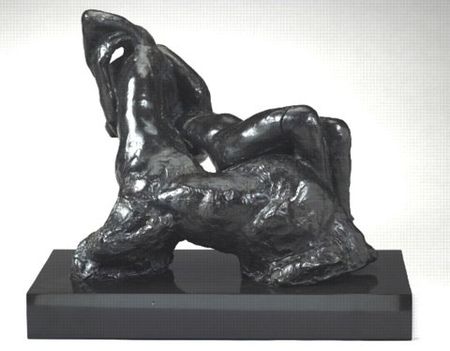

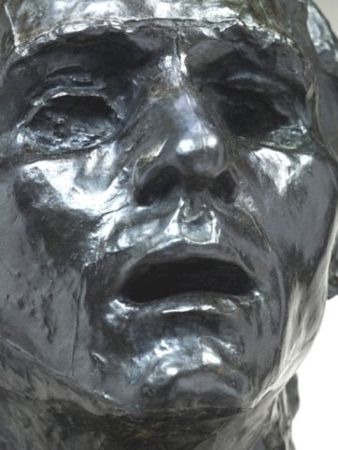
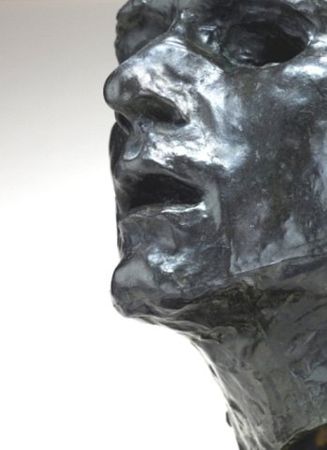
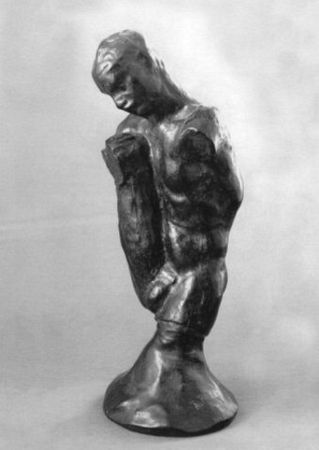
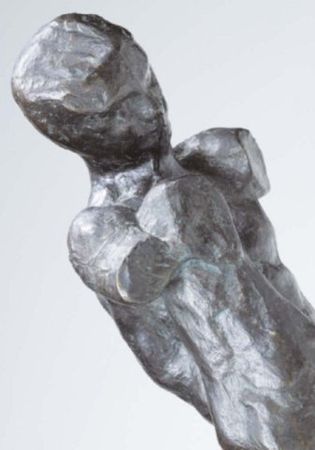


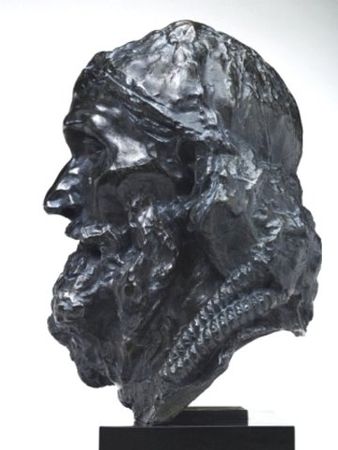
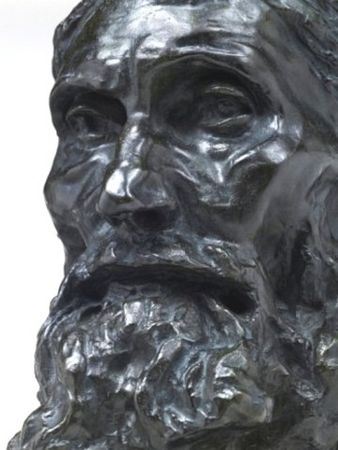
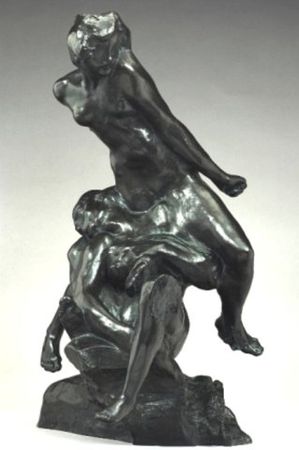



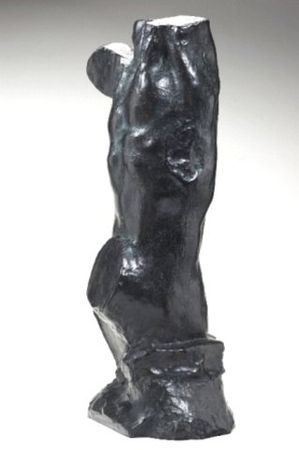

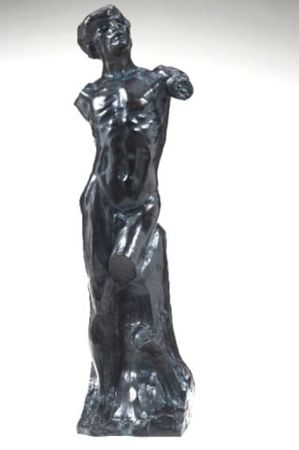

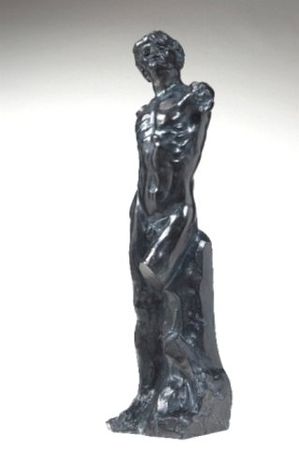


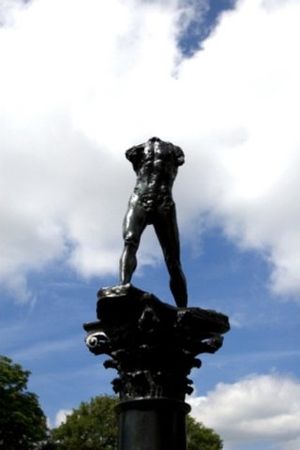
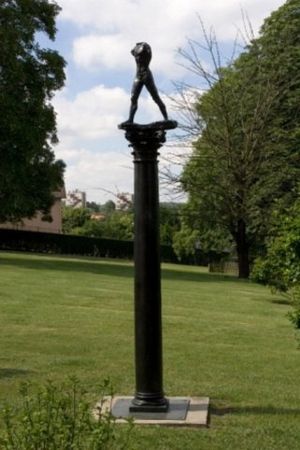




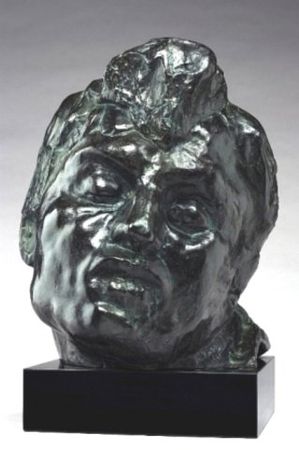
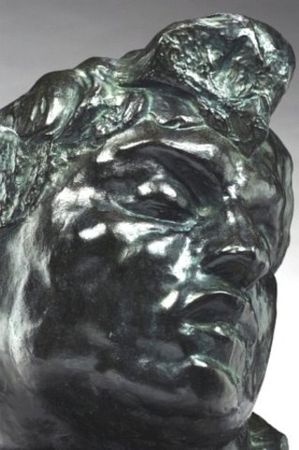



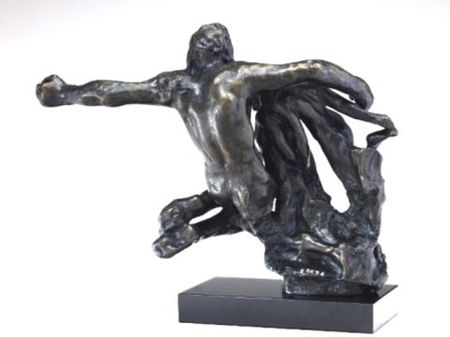


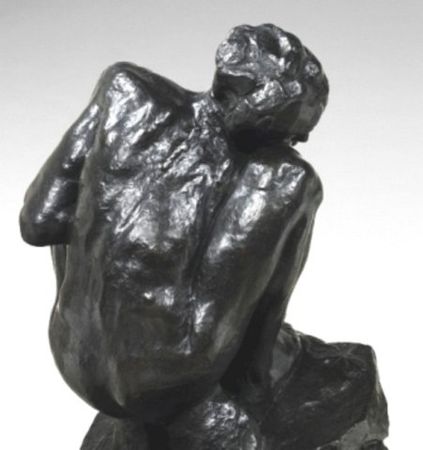
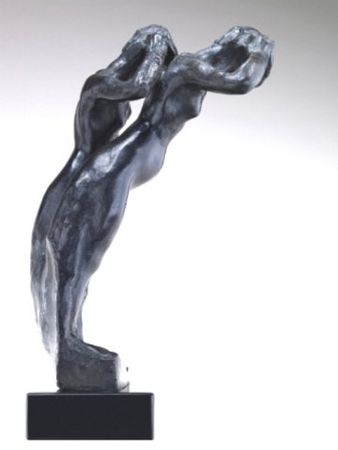
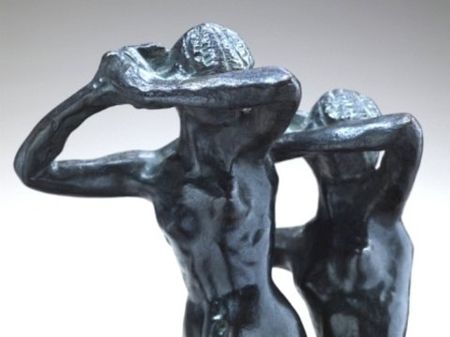




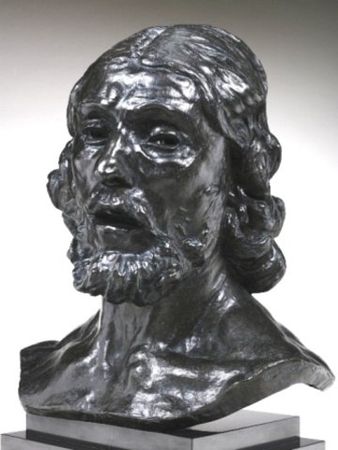




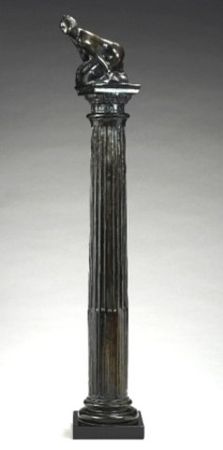
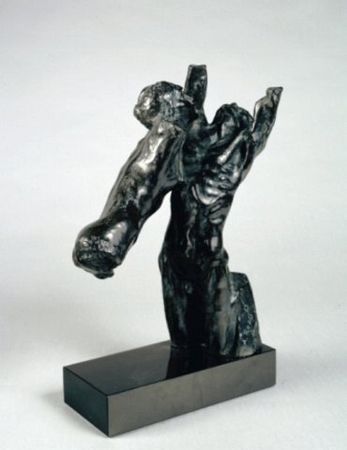








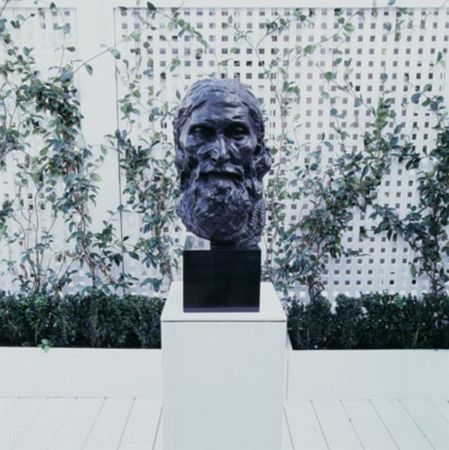
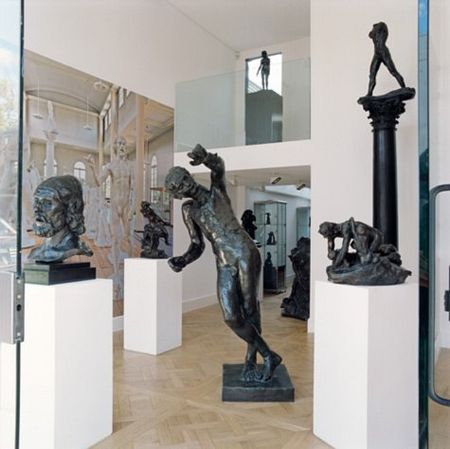
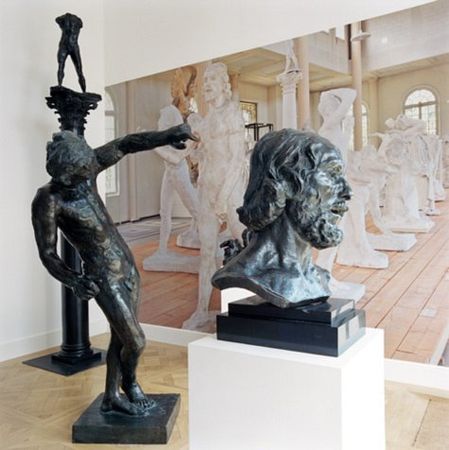
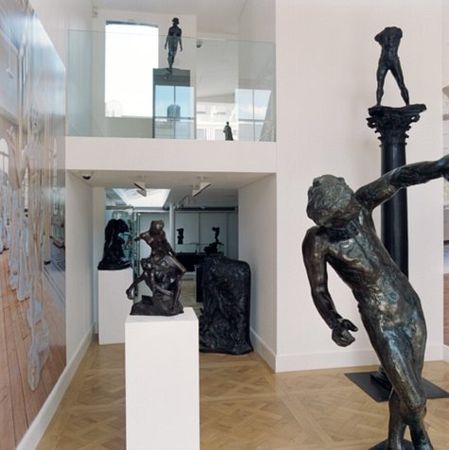
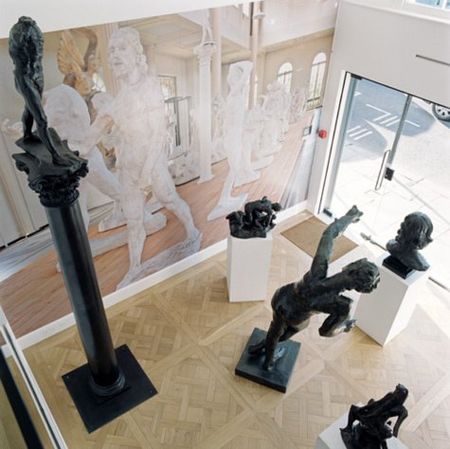


/http%3A%2F%2Fstorage.canalblog.com%2F53%2F41%2F119589%2F129216313_o.jpg)
/http%3A%2F%2Fstorage.canalblog.com%2F10%2F81%2F119589%2F127170196_o.jpg)
/http%3A%2F%2Fstorage.canalblog.com%2F42%2F44%2F119589%2F125948902_o.jpg)
/http%3A%2F%2Fstorage.canalblog.com%2F78%2F18%2F119589%2F122525383_o.jpg)